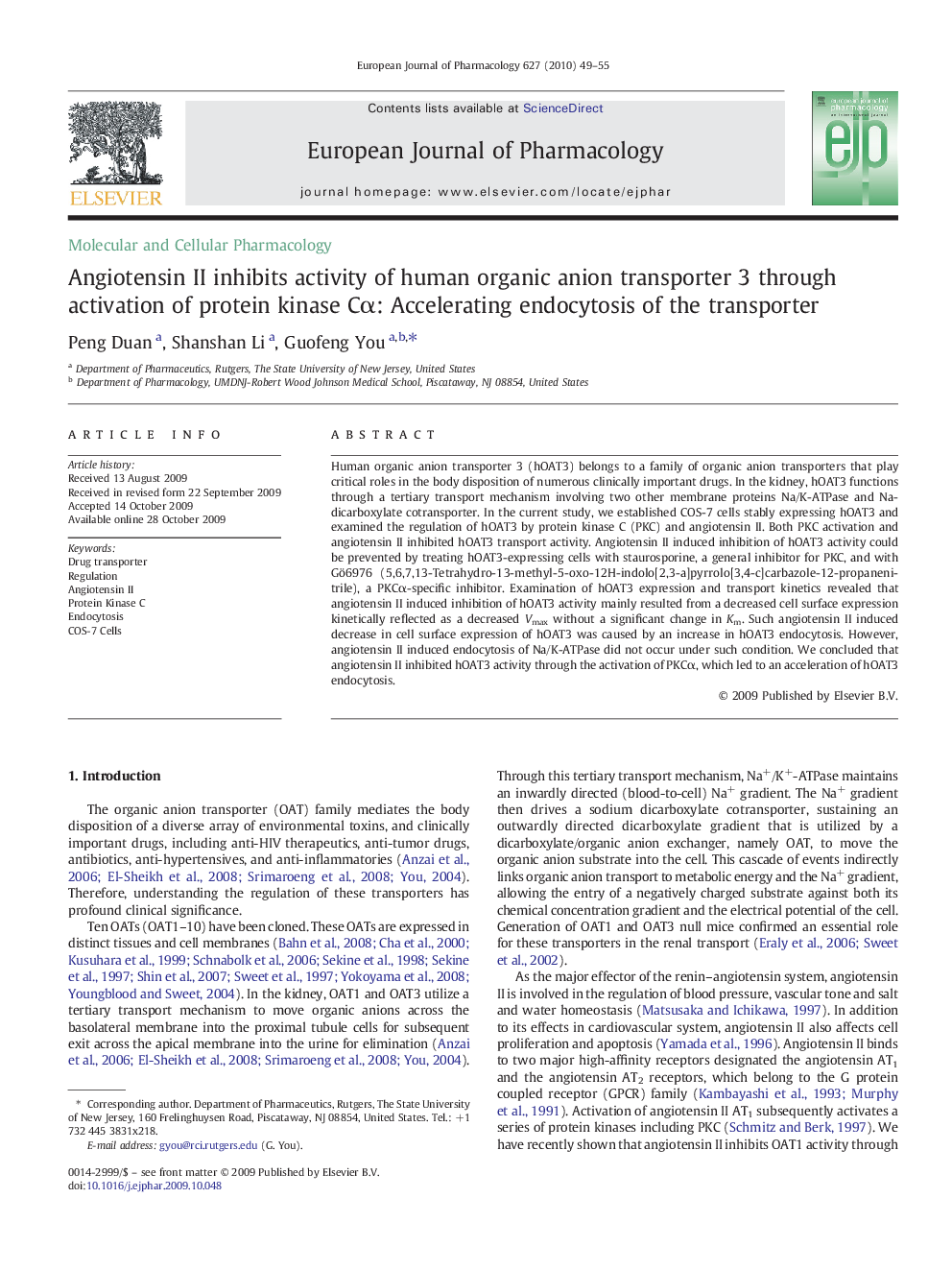| Article ID | Journal | Published Year | Pages | File Type |
|---|---|---|---|---|
| 2533744 | European Journal of Pharmacology | 2010 | 7 Pages |
Human organic anion transporter 3 (hOAT3) belongs to a family of organic anion transporters that play critical roles in the body disposition of numerous clinically important drugs. In the kidney, hOAT3 functions through a tertiary transport mechanism involving two other membrane proteins Na/K-ATPase and Na-dicarboxylate cotransporter. In the current study, we established COS-7 cells stably expressing hOAT3 and examined the regulation of hOAT3 by protein kinase C (PKC) and angiotensin II. Both PKC activation and angiotensin II inhibited hOAT3 transport activity. Angiotensin II induced inhibition of hOAT3 activity could be prevented by treating hOAT3-expressing cells with staurosporine, a general inhibitor for PKC, and with Gö6976 (5,6,7,13-Tetrahydro-13-methyl-5-oxo-12H-indolo[2,3-a]pyrrolo[3,4-c]carbazole-12-propanenitrile), a PKCα-specific inhibitor. Examination of hOAT3 expression and transport kinetics revealed that angiotensin II induced inhibition of hOAT3 activity mainly resulted from a decreased cell surface expression kinetically reflected as a decreased Vmax without a significant change in Km. Such angiotensin II induced decrease in cell surface expression of hOAT3 was caused by an increase in hOAT3 endocytosis. However, angiotensin II induced endocytosis of Na/K-ATPase did not occur under such condition. We concluded that angiotensin II inhibited hOAT3 activity through the activation of PKCα, which led to an acceleration of hOAT3 endocytosis.
